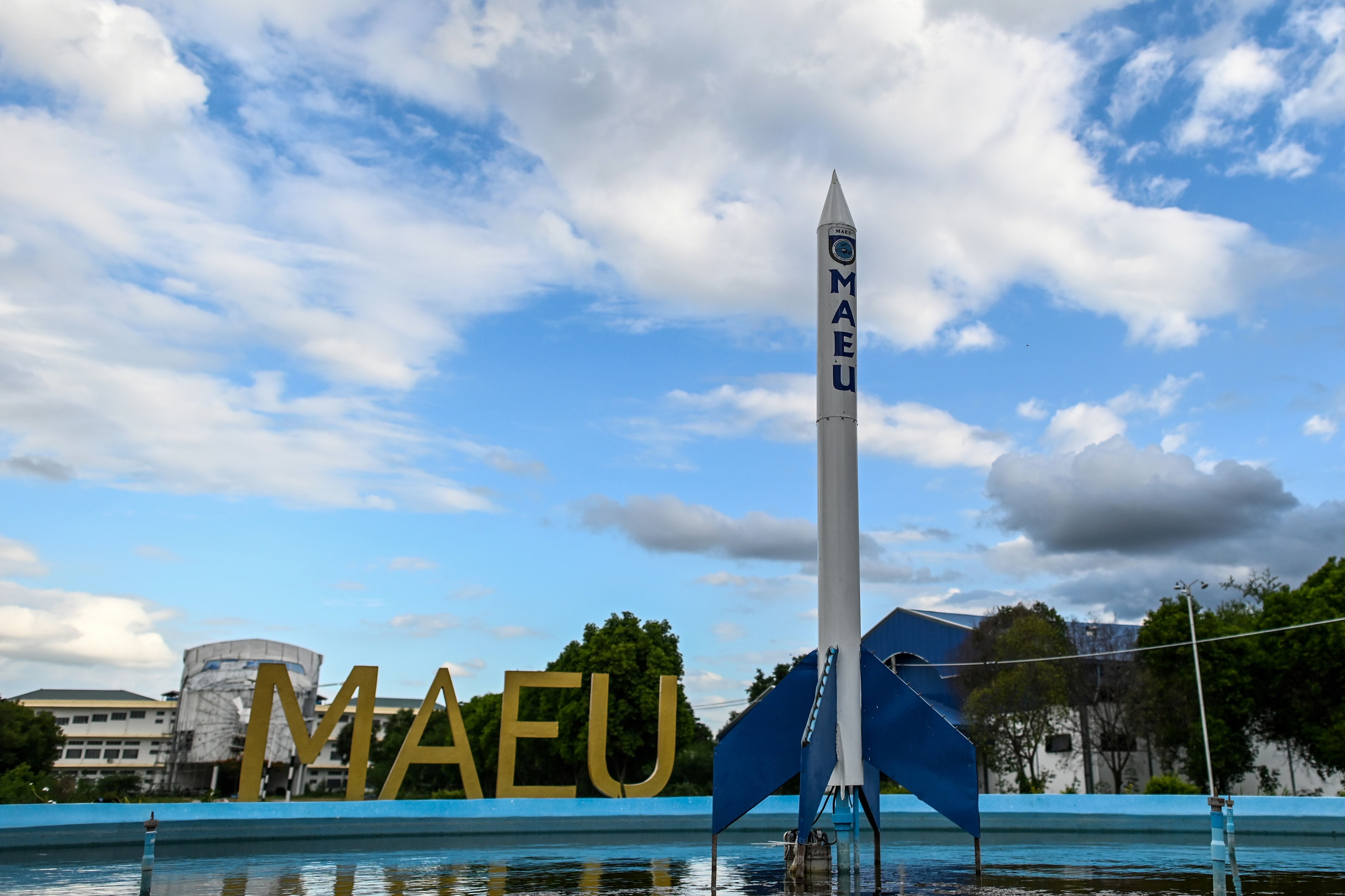Myanmar joins band of Asian nations launching satellites
Sign up now: Get insights on Asia's fast-moving developments

A mock rocket displayed on the campus of the Myanmar Aerospace Engineering University in Meiktila on June 19, 2020.
PHOTO: AFP
Follow topic:
MEIKTILA, MYANMAR (AFP) - Myanmar is preparing to launch its first-ever satellite, joining an unlikely coalition of nascent space nations aiming to protect millions from environmental disasters.
The future "super constellation" of micro-satellites from nine Asian countries will track typhoons, seismic activity and water flows, as well as provide data on land use, the growth of crops and disease outbreaks.
It is the first space venture for Myanmar, the least economically developed country in a consortium that includes the Philippines, Vietnam and Indonesia.
The benefits of observing the environment from space match the millions of dollars Myanmar is spending, says Dr Kyi Thwin, rector of the Myanmar Aerospace Engineering University.
"It's simply less expensive if we build our own satellite," he tells AFP from inside the university's space shuttle-shaped building near the town of Meiktila, adding that the technology will help Myanmar's economy "leap-frog forward".
Yet Myanmar is still in a different orbit to the big space nations - strong wind carried away the roof of the shuttle's nose and the university has no spare budget for repairs.
But with technological advances - and a spirit of collaboration - launching satellites is no longer the reserve of giants like the United States, Russia and China.
Dr Yukihiro Takahashi from Hokkaido University, one of two Japanese institutes leading the project, points to Nigeria, which has become a global hub for producing satellite technology on the cheap.
"Big, heavy and expensive has become small, light and affordable," he says.
'CHILDHOOD DREAM'
The target is to launch around five micro-satellites every year, each weighing under 100kg and with a lifespan of five years, until the consortium controls around 50 devices in orbit.
Myanmar's first contribution will cost a relatively non-astronomical US$16 million (S$22.17 million) - a fraction of the US$100 million bill or more for conventional satellites.
The launch will be overseas, but Myanmar will have its own ground control centre, working alongside a counterpart in Japan.
"Myanmar will be one of the main players," Dr Takahashi told AFP, saying Malaysia, Thailand, Bangladesh and Mongolia will also join the team at a later date.
He says the project's cameras are among the best in space, taking near-continuous images that will be turned into 3-D models of typhoons or disaster-stricken areas.
They will also track changes in land use, from urban development to deforestation and illegal mining.
"It makes a lot of sense - politically, economically and socially - for these countries to build up capabilities to meet their own risk profiles," Ms Sinead O'Sullivan, research fellow at Massachusetts Institute of Technology, told AFP.
The Asian consortium is "incredibly positive" and a way around buying expensive satellite imagery from commercial companies, she added.
The launches should also deliver a decent payback; it is estimated every dollar the US spends in space returns up to US$40 to the economy.
Myanmar's first batch of seven aerospace engineers have had their bags packed for several months, ready to fly to Japan for pre-launch development.
But their travel plans are still on hold, stymied by coronavirus border closures - and time is tight, with Myanmar's first launch slated for early 2021.
As engineer Thu Thu Aung, 40, listens to the latest briefing held under strict physical distancing rules, she says she is thrilled to be on the project, admitting her space obsession grew from watching movies about heroic pilots when she was young.
"This is our dream to send a satellite to space from Myanmar, from our university."

